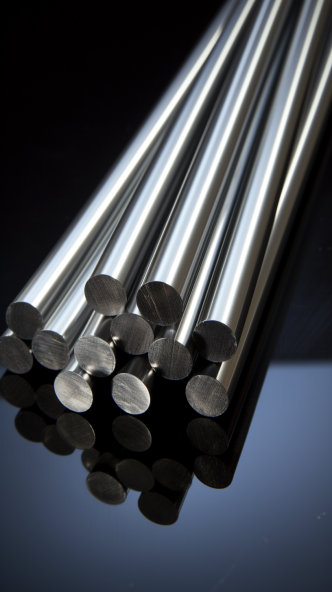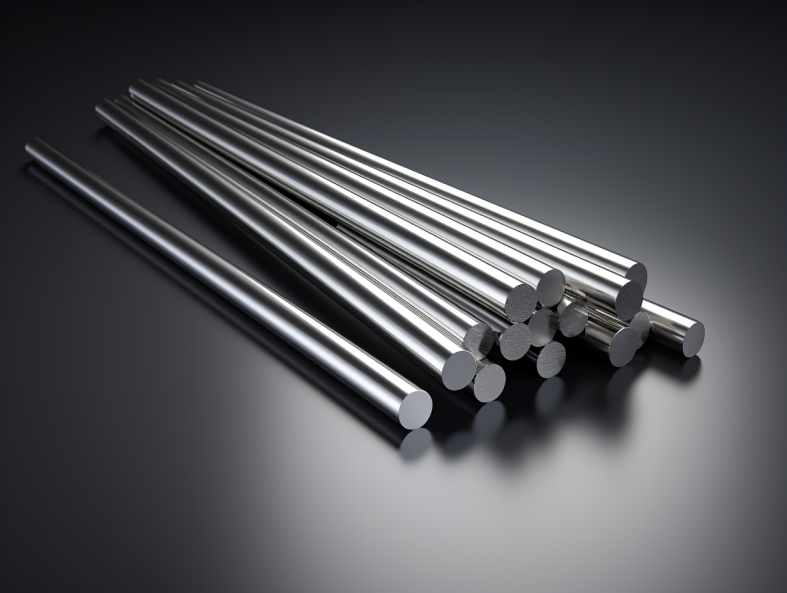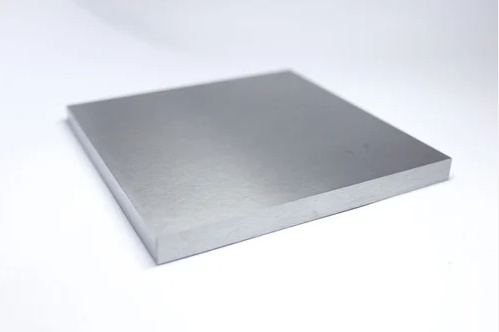Когда речь заходит о высокопроизводительных режущих инструментах, твердосплавные стержни являются основным материалом для промышленности. Но задумывались ли вы когда-нибудь о том, как эти маленькие, но могучие материалы появляются на свет? В этой статье мы подробно рассмотрим увлекательный процесс изготовления твердосплавных стержней. процесс производства твердосплавных стержней. От подготовки сырья до проверки качества - мы разберем каждый этап в разговорном тоне, который будет простым и содержательным. Итак, давайте начнем!
Подготовка сырья для процесса производства твердосплавных стержней
Считайте твердосплавные стержни супергероями среди инструментов для обработки - прочными, долговечными и способными работать в экстремальных условиях. Но даже супергероям нужен правильный фундамент. Этот путь начинается с тщательной подготовки сырья.
Основные ингредиенты карбид вольфрама (WC) порошок и металлическое связующее вещество, обычно кобальт. Карбид вольфрама ценится за свою твердость и износостойкость, а кобальт скрепляет частицы вместе. Оба материала тщательно отбираются, чтобы соответствовать строгим требованиям к качеству, потому что, как говорится, мусор внутрь, мусор наружу.
- Смешивание ингредиентов:
Порошки карбида вольфрама и кобальта смешиваются для получения однородной смеси. На этом этапе часто используется шаровое измельчение - процесс, при котором порошки перемешиваются с твердыми шариками во вращающемся барабане для обеспечения однородности. Представьте себе замес теста для хлеба, но в промышленных масштабах. - Контроль размера частиц:
Размер частиц карбида вольфрама имеет решающее значение. Мелкие зерна приводят к созданию более твердых материалов, в то время как крупные зерна повышают прочность. Баланс этих свойств подобен тонкой настройке гитары - точность имеет ключевое значение. - Распространение скоросшивателей:
Кобальт должен равномерно покрывать частицы карбида вольфрама для оптимального сцепления. Специализированные добавки и процессы обеспечивают этот критический этап.

Предварительное спекание в Процесс производства твердосплавных стержней
Предварительное спекание - это как выпечка пирога: оно подготавливает "тесто" к окончательному процессу спекания. Вот подробное описание:
| Параметр | Описание |
|---|---|
| Назначение | Удаляет излишки влаги и частично скрепляет частицы. |
| Диапазон температур | от 400°C до 800°C, в зависимости от состава материала. |
| Продолжительность | Обычно 1-2 часа, обеспечивая достаточное уплотнение материала. |
| Атмосфера | Выполняется в контролируемой среде, часто с использованием инертного газа, например аргона, для предотвращения окисления. |
Предварительное спекание повышает структурную целостность материала, облегчая его обработку в ходе последующих процессов. Представьте, что вы строите замок из песка - вы хотите, чтобы песок слипся, но еще не полностью затвердел.
Прессование или экструзия в процессе производства твердосплавных стержней
После того как материалы готовы, настало время придать им форму стержней. Этот этап включает в себя нажав или экструзия.
- Нажатие кнопки:
Порошкообразный материал помещается в матрицу и сжимается под высоким давлением. Этот метод отлично подходит для достижения равномерной плотности по всему стержню. - Экструзия:
Порошковая смесь сначала превращается в суспензию, а затем продавливается через фильеру, образуя длинные непрерывные стержни. Этот процесс похож на выдавливание зубной пасты из тюбика - гладкий, эффективный и идеальный для больших партий продукции.
Ключевые факторы формирования:
| Фактор | Нажатие кнопки | Экструзия |
|---|---|---|
| Форма выхода | Ограничивается более простыми конструкциями. | Возможность создания сложных и изменчивых конструкций. |
| Износ инструмента | Минимальное количество благодаря сухому прессованию. | Выше из-за абразивности суспензии. |
| Объем производства | Подходит для малых и средних объемов. | Предпочтительно для крупномасштабного производства. |
Спекание твердосплавных стержней
Спекание - это грандиозный финал, где происходит все волшебство. Материал нагревается до температуры, близкой к плавлению, в результате чего карбид вольфрама и кобальт сплавляются в плотную, твердую структуру.
| Параметр | Подробности |
|---|---|
| Диапазон температур | 1,300°C - 1,600°C |
| Атмосфера | Часто выполняется в вакууме или с использованием водорода для предотвращения загрязнения. |
| Продолжительность | Может длиться от нескольких часов до целого дня, в зависимости от размера и состава удилища. |
| Результат | Достигает максимальной плотности, твердости и износостойкости. |
Этот процесс похож на ковку меча - он требует сильного нагрева, точного контроля и грамотного подбора времени.






Продолжение обработки после Процесс производства твердосплавных стержней
После спекания твердосплавные стержни еще не готовы к использованию. Дальнейшая обработка обеспечивает их соответствие строгим техническим требованиям.
| Шаг | Назначение |
|---|---|
| Шлифование | Уточняет размеры и отделку поверхности, обеспечивая соответствие стержней жестким допускам. |
| Полировка | Улучшает качество поверхности, уменьшая трение при использовании. |
| Покрытие | Часто стержни покрывают такими материалами, как нитрид титана, для повышения производительности. |
| Резка | Стержни могут быть отрезаны на более короткие отрезки для решения конкретных задач. |
Каждый из этих шагов очень важен. Думайте об этом, как о превращении необработанного алмаза в сверкающий драгоценный камень.
Контроль качества процесса производства твердосплавных стержней
Контроль качества является основой любого производственного процесса, и твердосплавные стержни не являются исключением. Каждый стержень проходит тщательное тестирование, прежде чем его признают готовым к продаже.
- Точность размеров:
Такие инструменты, как микрометры и координатно-измерительные машины (КИМ), обеспечивают точное соответствие размеров стержней. Отклонение на ширину волоска может сделать стержень непригодным для использования. - Испытание на твердость:
Такие приборы, как твердомеры Роквелла или Виккерса, измеряют устойчивость стержня к деформации. - Обнаружение дефектов:
Неразрушающие методы контроля, такие как ультразвуковой или рентгеновский анализ, используются для выявления внутренних дефектов без повреждения стержня. - Тестирование производительности:
Образцы стержней подвергаются испытаниям в реальных условиях, чтобы проверить их долговечность и функциональность.

ЧАСТО ЗАДАВАЕМЫЕ ВОПРОСЫ
| Вопрос | Ответить |
|---|---|
| Для чего используются твердосплавные стержни? | Они используются для производства режущих инструментов, сверл, концевых фрез и износостойких деталей. |
| Как изготавливается порошок карбида вольфрама? | Он производится путем соединения металлического вольфрама с углеродом при высоких температурах в контролируемой атмосфере. |
| Что делает твердосплавные стержни такими прочными? | Уникальное сочетание карбида вольфрама и кобальта создает материал, который одновременно является твердым и прочным. |
| Можно ли перерабатывать твердосплавные стержни? | Да, они могут быть восстановлены и переработаны, что уменьшает количество отходов и воздействие на окружающую среду. |
| Чем экструзия отличается от прессования? | Экструзия лучше подходит для сложных форм и больших объемов, а прессование - для более простых конструкций. |
Заключение
Сайт процесс производства твердосплавных стержней это симфония науки, инженерии и мастерства. От тщательно подготовленного сырья до строгих проверок качества - каждый шаг способствует созданию продукта, который нельзя назвать необычным. Будь вы машинистом, инженером или просто любопытным человеком, понимание этого процесса проливает свет на то, почему твердосплавные стержни являются невоспетыми героями мира производства. И когда вы в следующий раз увидите режущий инструмент в действии, вы будете знать, какой невероятный путь он прошел.




